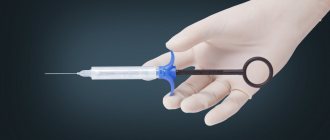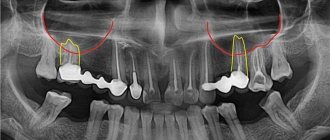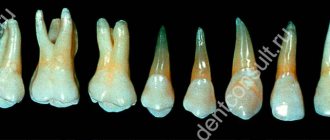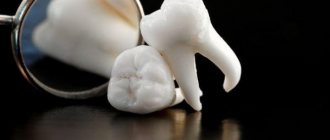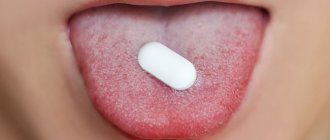Each of us has at one time or another faced the need for dental treatment or removal.
Do not be afraid of these procedures, as they are absolutely painless, thanks to various methods of pain relief.
You should understand the questions of what is tooth extraction and anesthesia?
Tooth extraction is a surgical micro-operation, which is prescribed when treatment is impossible. The procedure is performed under anesthesia, sedation or general anesthesia, which allows the removal to be performed comfortably for the patient.
Anesthesia methods in dentistry
All methods of anesthesia in dentistry are divided into general and local. General anesthesia is general anesthesia and intravenous sedation. That is, drugs are used that affect the entire body, and not just the oral cavity. This is a standard general anesthesia that is used not only in dentistry, but also in other branches of medicine. Local anesthesia is the familiar “freezing”, administered by injection. Xenon therapy can also be used in combination with general or local anesthesia.
Local anesthesia is most often used in dentistry. There are many indications for its use. These include:
- cleaning teeth from deposits;
- dental treatment of any complexity;
- removal of dental units;
- performing manipulations on the gums;
- surgical manipulations in the oral cavity;
- implantation or preparatory measures (but in some cases general anesthesia is recommended).
Local anesthesia has obvious advantages. The drugs are safe, they do not negatively affect the body, do not cause side effects and are eliminated quickly. At the same time, the techniques completely relieve pain of any nature.
Local application of anesthetics involves the use of special syringes with a very thin needle to avoid pain during injection. Main types of local anesthesia:
- Applique. It involves applying a pain-relieving anesthetic in the form of a gel. It is used primarily for oral hygiene and removal of deposits, especially if ultrasound is used for this. Its effect is short-lived.
- Infiltration. This is the standard injection “freezing”, which is carried out in almost all procedures. The injection can be injected into the mucosal tissue, bone or periosteum. In this case, the dentist must take into account the anatomy of the upper and lower jaw.
- Conductor. Used for long and complex surgical interventions. An anesthetic with a high content of the active component is selected. It is injected directly into the nerve, so the effects of anesthesia last longer and affect a larger area. Conductive anesthesia can be used during operations, tooth extraction, and when installing several implants at the same time.
Components of anesthetics
The anesthetic contains local anesthetics, preservatives, vasoconstrictors and stabilizers. The drug used for local anesthesia for pain relief may not contain all of the listed components. To effectively block impulses from nerve endings, one anesthetic is used, and to prolong the period of action and enhance the analgesic effect, vasoconstrictors (adrenaline) are needed. It is used to create and maintain a sufficient concentration of the drug in the treatment area. Preservatives and stabilizers are used in practice to increase the shelf life of anesthesia.
Anesthesia does not work: what to do?
Situations where anesthesia does not work are extremely rare. Less than 1 percent of patients are sensitive to a particular drug, so choosing the right type of anesthesia is key. Frequent reasons for effectiveness are incorrectly selected dosage of the anesthetic or errors in its administration.
When using anesthesia, you must take into account the following health conditions:
- If you are prone to allergies, asthma or diabetes, medications without preservatives and with a low concentration of epinephrine are used. The funds are selected individually, taking into account the analysis.
- For heart pathologies and high blood pressure, medications with a minimum of epinephrine or without it are used. Also, they should not contain adrenaline. In these cases, xenon therapy or intravenous sedation may be used.
- For pregnant and lactating women, epinephrine dosages should be kept to a minimum. Then it cannot cross the placenta and enter breast milk.
Sedation and anesthesia are completely safe if performed by an experienced specialist. When carrying out long and complex interventions, such as implantation or prosthetics, sedation is even a recommended method, since the operation becomes more comfortable for the patient.
Our doctors select anesthesia individually. We offer all types of dental services: whitening, cleaning, surgical and therapeutic treatment for adults and children, installation of crowns, veneers and dentures. You can find out the clinic’s prices and make an appointment through the website or by phone.
Basic requirements for modern anesthetics
An anesthetic is a unique substance that suppresses the excitability of the receptor, turns off the impulse to the patient’s nerve fibers, after which pain relief occurs.
The anesthetic has basic requirements:
- do not cause dilation of the patient’s blood vessels;
- do not provoke tissue irritation;
- high resistance to sterilization of the drug;
- slow absorption into the blood;
- greater strength and duration of analgesic effect;
- have low toxicity to the patient;
- good analgesic effect during dental treatment.
The local anesthetic has a direct inhibitory effect on the receptor and the permeability of the sodium channels in the patient begins to decrease, while the entry of sodium into the human cell is completely disrupted, after which an action potential is generated and this all leads to a lack of sensitivity and analgesia during treatment. Sensitivity is switched off one by one: at the beginning pain, then taste, then temperature and finally tactile. This is how the process of pain relief occurs.
To prolong the effect of painless treatment, a vasoconstrictor (for example, adrenaline) must be added to the local anesthetic. However, in patients with heart disease, it poses a greater risk of heart attack. A vasoconstrictor can cause the patient to relax the muscles of the bronchi and intestines, dilate the pupils, significantly increase blood sugar, increase tissue metabolism and cause many adverse reactions. But if you exclude adrenaline from the local anesthetic drug, this will lead to ineffectiveness and the patient will not experience pain relief.
The decision to use this substance in treatment should be made by an experienced dentist, as a last resort. After all, after adding adrenaline to the local anesthetic, the effectiveness of anesthesia itself during dental treatment increases significantly and its toxicity for the patient decreases. This occurs due to the very slow absorption of the painkiller into the blood. And sometimes toxic complications that appear during local anesthesia are mistakenly attributed to a side effect of the substance adrenaline.
Occurrence of complications
- difficult access;
- frequent retention;
- unpredictable structure;
- features of the location of the mandibular alveolar nerve.
Are common
Painful sensations
Swelling of the tissues of the face and neck
- swelling of the lymph nodes;
- discomfort when swallowing;
- painful sensations during mouth movements, radiating to the ear.
Hematomas
Alveolitis
complications after wisdom teeth removal
- the gums swell and turn red;
- local pain and headache are observed;
- sore throat;
- the temperature rises, muscle aches appear;
- lymph nodes become inflamed, most often the submandibular ones.
- increased persistent temperature;
- poor general health;
- severe migraine-like pain;
- nausea;
- other signs of intoxication of the body.
Increased body temperature
A slight increase in body temperature to 37.5-38 °C also often occurs in the postoperative period. This complication occurs due to a reaction to inflammation. The temperature should completely return to normal within the first day, and if it continues to rise and rise, it means that more serious pathologies have arisen and you need to go to the hospital again.
Bleeding
- rupture of large vessels;
- capillary fragility;
- hypertension.
Damage to the roots of adjacent teeth
Flux
- redness, suppuration and swelling of the gums;
- severe shooting pain;
- temperature increase;
- weakness.
Others
- displacement of the seventh tooth (2 molars);
- mouth rupture; cut gums or cheeks;
- jaw injuries.
Criteria for choosing a high-quality local anesthetic
The main criterion for choosing an effective local anesthesia will be the nature of the upcoming dental intervention. The doctor selects the drug taking into account the required depth of treatment, the duration of local anesthesia according to the nature and scope of the upcoming intervention. The choice of anesthetic is influenced by pregnancy, great fear of the upcoming manipulation, and possible pathology in the patient. Take into account the presence of contraindications during treatment. There are age restrictions for the use of anesthetics. The dosage of anesthesia for dental treatment of the teeth of young children or elderly patients is always specified.
Eating after removal
It is not recommended to eat salty and spicy foods after tooth extraction. They irritate the mucous membrane and increase pain. Consuming hot food and drinks can cause bleeding and increase swelling.
Many people have been afraid to eat ice cream for a long time, claiming that they will catch a cold. Cold food has no effect on this. This problem can be caused by general hypothermia of the body or a draft. The main thing is to eat the ice cream slowly and not bite into large pieces. This delicacy is even recommended, because it forces the blood vessels to constrict, which means that there is no risk of bleeding.
Category Medicines / drugs Published by Mister stomatolog
Contraindications for the use of local anesthetic
To ensure that the local anesthetic is safe for the patient, contraindications for use should be taken into account. They can be grouped:
- Allergic manifestations in a patient to an anesthetic. It is a complete contraindication to the use of such a remedy to anesthetize the patient’s teeth. It is imperative to warn your dentist about the presence of allergic manifestations or a possible reaction to previous treatment of the oral cavity and teeth.
- There is a deficiency of metabolic systems. Many painkillers have a strong toxic effect in case of overdose of local anesthesia, insufficient metabolism and excretion. In this situation, it is better to use the drug in small doses.
- Age. For small children, the local anesthetic is taken in a lower dose than for anesthetizing the teeth of adult patients. To achieve effective dental pain relief, it is necessary to use a safe local anesthetic drug, limiting the dosage.
In modern dental practice, there is a wide selection of over-the-counter products that contain an anesthetic and will make dental treatment painless. After all, it is the main reason for the strong fear of patients in dental clinics.
Modern clinics offer painless treatment of the oral cavity or teeth using a local anesthetic. There is no need to be afraid of going to the doctor, put off this visit and make the disease worse, because today you can cure, remove a tooth or install an implant without pain. You need to decide on a dental clinic and choose a good doctor. He will be able to qualitatively cure the tooth by selecting an effective local anesthetic to numb the mouth or teeth. This is the key to painless treatment of the patient’s teeth and oral cavity.
Removing baby teeth
Milk teeth that can no longer be cured, but they provoke the development of acute inflammation of the bone or periosteum, must be removed. Which method to use will depend on the specific situation.
For example, the milk tooth being removed is already well loosened and the pain when pulled out will be minimal. In this case, the doctor may advise putting on an application, gel or aerosol. Lidocaine aerosol is used quite often. There are 3 mg per 1 kg of body weight. For children, it is better to apply this substance using a cotton swab.
For more serious dental problems, children are given infiltration anesthesia. Lidocaine, Ubistezin Forte and similar medications are used. Two injections are made - from the gum and from the tongue.
Children tolerate these painkillers well. But before using them, it is necessary to undergo tests to identify allergens. It is also worth clarifying whether the child has problems with the cardiovascular system.
